2021 Summer Research Grant Awardees
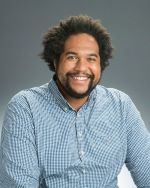
Dr. Norman Ajari
Department of Philosophy
College of Liberal Arts and Sciences
Project Title: Properties of Enjoyment. Black Males within White Desire
Ideas conveyed by popular culture, non-profits, and mainstream political discourse tend to assimilate racism with the detestation of certain demographic groups, especially under the rubric of “hate speech”. Appreciation and desire, especially when they concern Black men, are rarely associated with prejudice. By contrast with those views, my project will evidence the historical construct of a caricatured image of Black males aimed at popular white consumption. In this context, an image deemed to be positive is rarely free from racist excess, sexual overinvestment, and tethering of Black agency. The African American athlete whose prowess we admire, the artist or comedian we enjoy watching, or our favorite musician, may very well not be as much role models or symbols of overcoming racial boundaries as they are contemporary symptoms of a long history of consuming Black performance and flesh in the Americas that dates back the modern slave markets.

Dr. Sutirtha Bagchi
Department of Economics
College of Liberal Arts and Sciences
Project Titles: The development and analysis of a global dataset of billionaires
In Bagchi and Svejnar (2015), my co-author and I construct a measure of wealth inequality based on Forbes' magazine's listing of billionaires from around the world. The dataset starts in 1987 as that was the first year for which Forbes magazine published this list. Given our interest in examining the effects of wealth inequality on subsequent economic growth, where we would allow for a 5-year lag between a change in inequality and subsequent economic growth, the billionaire dataset that we constructed stopped in 2002. Since then, my co-author and I have, with the help of numerous research assistants, including several based at Villanova, added data for two more years – 2007 and 2012. Most recently, during Fall 2020, with the help of another undergraduate Villanova RA, we embarked on an effort to add data for 2017. Having data for 2017, along with a classification of the billionaires as politically connected or unconnected and (separately) as self-made or inherited, will allow us to answer the following questions that are of interest to researchers:
1. Is the growth rate of wealth, r, greater than the growth rate of the economy, g, i.e. is r > g?
2. How have patterns of inequality at the top of the wealth distribution changed over time and how do these changes correlate with policies followed in countries across the world?
3. Does the Pareto distribution do an adequate job of characterizing the wealth distribution for countries outside of the U.S.?

Dr. Anil Bamezai
Department of Biology
College of Liberal Arts and Sciences
Project title: Targeting Ly-6A for Cancer Immunotherapy using B16 melanoma mouse tumor model.
Cancer afflicts over 65 million individuals in US, it collectively results in 35% of all premature deaths, and account for over $217 billion/year lost wages. Cancer arises from body’s own tissues/organs because of genetic mutations. In most cases, mutant cells are recognized by killer T cells of the immune system and eliminated quickly. This “immunosurveillance” by helper and killer T lymphocytes fail because of aggressive behavior exhibited by cancer cells due to their growth-promoting mutations in critical genes encoding proteins involved in cell signaling, cell division and cell survival/death. Enhancing body’s own T cell responses by blocking function of inhibitory T lymphocyte proteins, (popularly known as immune checkpoint blockade), is one major strategy for cancer immunotherapy. This grant proposal focuses on targeting or blocking the function of Ly-6A protein, a potential Immune Checkpoint Inhibitor (ICI), to enhance anti-tumor immune response. Targeting PD-1 (FDA approved nivolumab) (6) and CTLA-4 (FDA approved Ipilimumab), two immune checkpoint inhibitors, have proved successful immunotherapy in 10-20% of skin (melanoma) and lung cancer patients. Extending this success to a majority other patient population receiving immunotherapy, and for targeting variety of cold tumors (ovarian, prostate, breast, brain) presents next set of challenges in fight against cancer. Establishing the role of Ly-6A as new ICI in the proposed mouse model will aid in designing novel singular and/or “combinatorial” ICI blockade strategy for combating cancer.

Dr. Samantha Chapman
Department of Biology
College of Liberal Arts and Sciences
Project Title: Mangroves Marching Northward: How Do Warming Temperatures Influence Mangrove Reproduction?
Mangroves are coastal tropical trees that spread by making propagules, which are seeds that float. Mangroves have used these propagules to colonize vast portions of the tropics by rafting to coasts around the world. Due to recent climate change, mangrove propagules that arrive in traditionally cooler (temperate) areas can now survive there. In the eastern United States mangroves have migrated from South Florida to the border of Georgia in just the last few decades. However, we don’t yet know how warming temperatures affect the growth and success of mangrove propagules. Using my existing mangrove warming experiments in North Florida (www.wetfeetproject.com), I aim to assess how warming temperatures will influence the reproduction and survival of mangroves. This research will allow us to better predict how mangroves will continue to migrate up the U.S. coast in a warmer future.

Dr. Peter Chi
Department of Mathematics & Statistics
College of Liberal Arts and Sciences
Project Title: New statistical tools to help end a global pandemic (and prevent new ones)
The COVID-19 pandemic, caused by the virus called SARS-CoV-2, has had a devastating impact on our society. At the time of the proposal submission for this work (December 18, 2020), it had been responsible for over 300,000 deaths in the U.S. alone, a figure which has since risen to over 546,000 (as of March 26, 2021). Additionally, it has caused unmeasurable consequences on our collective health and well-being that we have all been enduring now for over a year.
Like all viruses, SARS-CoV-2 mutates over time, and has the potential to mutate into a strain that may be remarkably different from the currently existing strains. If this occurs, the implications may be disastrous: the virus may gain increased infectivity, deadliness, or an ability to evade existing vaccines. Concerns of this exact possibility began to escalate in the months after this proposal was submitted, as news of new variants began to arise. This makes it absolutely imperative that we elevate our understanding of how and when such mutations might occur. Thus, the goal of this project is to develop a novel statistical methodology that can model these mutations more accurately than is currently possible, to help eradicate this disease and be better prepared for future ones.
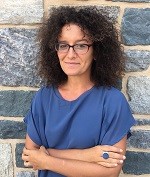
Dr. Agnese Codebo
Department of Romance Languages and Literatures
College of Liberal Arts and Sciences
Project Title: How Do Slums Matter: Poverty, Culture, and Dissidence in Contemporary Buenos Aires
With the formation of the industrial city, along with the factory and the railroad, came the slum, a space that lacked basic hygienic infrastructures, and proliferated throughout the world following the industrial revolution. The persistence of villas miseria in the Argentine territory as well as in other developing countries, shows that neither modernity nor capitalism are able to absorb these spaces. My book manuscript focuses on Buenos Aires because it is there that villas miseria began to appear at the time of the city’s modernization and it is there where the majority of slums is still situated. Moreover, the case of Buenos Aires is of much interest for the presence of a state subject that tried to do away with the structural causes of villas miseria by promoting the growth of the middle class. Nevertheless, the idea of a predominantly middle-class Argentina contributed both to hide the urban margins and hinder the possibility of approaching the cultural production from and on slums. The villa miseria, represents a heterogeneous urban space that troubles the dualities east/west, center/periphery, and first/third world. Throughout my book, I understand slums not as places of vulgarization, nor as residues of industrial development, but rather as spaces of production. Specifically, they emerge as spaces that produce new aesthetics.

Dr. Weijian Diao
Department of Chemical & Biological Engineering
College of Engineering
Project Title: Rational Synthesis of Highly Dispersed Bimetallic Catalysts using the Method of Galvanic Displacement
From petroleum refining to pharmaceuticals to automobile emission control, catalysts are widely used in industrial processes and daily life. Approximately 80% of the processes in the chemical industries require the use of catalysts. Because of that, catalysis contributes directly or indirectly to approximately 35% of the world's GDP. Recent studies have suggested that highly dispersed, even atomically-dispersed single atom catalysts (SACs) can be prepared and stabilized on certain catalyst supports to function as highly coordinatively-unsaturated catalytic sites.
The approach for this study is to synthesize highly dispersed secondary metal even single atom sites in bimetallic system using galvanic displacement method. Galvanic displacement (GD) takes place when the base material is displaced by a metallic ion in the solution having a lower oxidation potential than the displaced metal ion.
In this project, a series of highly dispersed catalysts including Pt(Pd)-Cu(Au) will be synthesized using galvanic displacement method. By changing synthesis parameters including pH, temperature, metal precursors and base catalysts, secondary metal loadings will be adjusted as well as base metal loadings and particle size. Comprehensive characterization techniques will be used to verify structure and morphology of highly dispersed bimetallic catalysts.
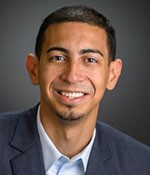
Dr. Alexander Diaz-Lopez
Department of Mathematics & Statistics
College of Liberal Arts and Sciences
Project Title: Mathematics and Games
Throughout history, the analysis of games has pushed the fields of mathematics and statistics forward; from the initial use of probability in games of chance to the recent advances in artificial intelligence to master some games. As part of this project, we will study three games: the Ivy cube, Tower of Hanoi, and SET. We plan on using a group structure on the Ivy cube (a Rubik’s cube-like puzzle) to prove that the number of configurations of the Ivy cube is 29,160 and that God's number (minimum number of moves to solve any configuration) for this puzzle is 8 moves. By fully understanding the Ivy cube, we will shed a light on what is behind the algorithms of the Rubik's cube. For the Tower of Hanoi, we plan to provide an enumeration result for the number of solutions (without any imposed conditions) of the Tower of Hanoi puzzle with n disks. Finally, for the card game SET, we plan on finding an algebraic approach to prove that the minimum number of cards to guarantee a SET is 21 cards.

Dr. Bryan Eigenbrodt
Department of Chemistry
College of Liberal Arts and Sciences
Project Title: Seeing is Believing: Development of Operando Raman Spectroscopy Chamber to Understand and Advance Fuel Cell Chemistry
Majority of the Worlds energy production is generated from fossil fuels, a resource that is limited in supply and a major contributor to environmental degradation. For these reasons, finding alternative energy technologies that utilize renewable resources efficiently while producing minimal pollution is of great global importance. Fuel cells represent a promising alternative energy technology that can convert chemical energy directly to electrical energy for a variety of stationary and portable power applications. Due to high operational temperatures and fully encased device architectures, research in this field has been limited to electrochemical methods and characterization techniques performed after the device has operated. These experimental techniques, although useful, can only infer the chemical and material properties occurring during fuel cell device operation. The inability to directly study and understand fuel and electrode catalyst chemistry in these fuel cell devices will limits its ability for future commercialization and providing affordable energy. The experiments being funded will employed in operando Raman spectroscopy and a custom fuel cell electrochemical assembly to correlated electrochemical performance of these devices with chemical processes occurring simultaneously during fuel cell device operation. These measurements will be able to provide unprecedented molecular and materials-specific in operando information about the chemistry occurring in operating fuel cells. The unparalleled chemical information gained from these studies will help guide the development of efficient fuel cell assemblies for future power generation.

Dr. Charles Folk
Department of Psychological & Brain Sciences
College of Liberal Arts and Sciences
Project Title: How does anxiety disrupt attentional control?
In 1972, an Eastern Airlines Flight crashed into the Florida everglades killing 101 people on board. The accident analysis attributed the crash to the pilots’ anxiety and preoccupation with a faulty landing gear indicator, which resulted in their failure to notice that the autopilot was in the wrong configuration and that they were slowly losing altitude, despite auditory alarms to that effect (Job, 1994). This chilling example indicates that the processing of visual information requires the allocation of attentional resources, which are limited. Allocating attention to one source can mean missing potentially critical information from other sources. It also shows how anxiety-producing situations can result in maladaptive changes in attention allocation. My laboratory has studied the factors that influence the allocation of visual attention and has developed several seminal paradigms for measuring the conditions under which salient stimuli can produce attentional distraction or “capture”. The goal of the present research is to apply these paradigms to study the effects of anxiety/stress on attention allocation. Some argue that stress results in enhanced distraction by peripheral, irrelevant stimuli whereas others argue that stress produces “tunnel vision”. In order to adjudicate between these different theoretical perspectives we will use a “threat of startle” technique to induce stress and then measure attentional distraction by irrelevant distractors while participants monitor a centrally presented stream of characters for a prespecified target. The results will have important implications for theory development as well as for real-world applications such as pilots monitoring displays in the cockpit.
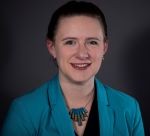
Dr. Eliza Gettel
Department of History
College of Liberal Arts and Sciences
Project Title: Between Federation and Empire: Thinking about the Roman Empire like a Hellene
This project investigates how a premodern group thought about and negotiated its place within an emerging empire. Our modern concept of ‘empire’ with its emperors, provinces, governors, taxes, and other mechanisms for controlling subject populations relies significantly on hindsight of the Roman Empire. However, this state developed over centuries, and individuals who were incorporated into the emerging Roman super-state did not have the same models or formal vocabulary (as we do today) for thinking and talking about this sort of centrally-controlled, territorially-expansive state. Without easy access to birds’-eye-view maps, what models did ancient groups employ to think about their place within the massive Roman state?
My monograph takes up the perspective of Hellenes living in the Greek mainland after their incorporation into the Roman Empire. I propose that they drew on a familiar model for a supra-civic state to understand their evolving political context: the koinon or 'federal state.' Koina had existed in the Greek mainland for 500 years before the region became a Roman province, and my book extends their history for another 300 years, into the 3rd century CE. I propose that local groups could think about the Roman Empire as the largest koinon to which they belonged. This model was not a passive descriptor. Instead, it actively enabled Hellenes to argue for a particular vision of the Roman political community: one that framed them as citizens in a relatively egalitarian, multiethnic state, rather than as subjugated to a central power.

Dr. Kelly Hambleton (Prsa)
Department of Astrophysics & Planetary Science
College of Liberal Arts and Sciences
Project Title: Unprecedented Asteroseismology of RoAp Stars
Rapidly Oscillating Ap (roAp) Stars are strongly magnetic stars hotter than our Sun that pulsate with very rapid pulsations (on the order of minutes). The majority of these unique pulsations are driven by the star expanding and contracting like a heat engine; however, research has shown that this mechanism cannot account for the fastest pulsations found in these objects.
Through the creation of mathematical models, our team has proposed an additional mechanism, turbulent pressure, to account for the fastest pulsations. Our mathematical models place limits on the temperatures and brightnesses of stars that pulsate via this newly proposed mechanism, which enable us to test our hypothesis with observations. Until now, detailed observations of these objects have been scarce due to their pulsation timescales and further because these objects are quite rare (only 72 roAp stars have been observed, of which only 17 have precise, space-based data).
Now, with the Transiting Exoplanet Survey Satellite (TESS), we have obtained extensive data on all the known and hundreds of prospective roAp stars. By analyzing these data, we will determine if our proposed mechanism accounts for all the pulsations we see in these intriguing stars. The analysis of these observations will provide more information about these rare objects and allow us to build on the or knowledge of strongly magnetic stars.

Dr. Lynne Hartnett
Department of History
College of Liberal Arts and Sciences
Project Title: Lenin’s Neighbors: Russian Political Exiles and Émigré Communities in Liberal Britain, 1881-1918
My manuscript is a study of the Russian political exiles who fled tsarist prisons and Siberian exile for the safety and freedom of Britain during the reigns of the last two Romanov Tsars. In analyzing the political, cultural, and social endeavors of these reluctant émigrés over nearly three decades, I demonstrate that these displaced Russians forged networks of revolution that affected not only the political dynamics in Imperial Russia but also in Britain itself. Although the number of Russian exiles living in Great Britain during these decades was smaller than its counterpart in Switzerland or France, the public nature of their activities brought them outsized influence. Through a detailed examination of their literary, organizational, and radical activities, I present a more nuanced understanding of revolution in this period than has been previously depicted in the historical literature. While I argue that violence was an essential part of revolutionary rhetoric for these Russian exiles and their British sympathizers, I flip conventional perceptions. Rather than presenting these figures as the agents of violent revolutionary change, I paint a picture of radical communities who defined themselves as the righteous victims of governmental repression. As they did, these displaced revolutionaries cemented the trope of Russian despotism for European and American liberal audiences and influenced developing ideas about the role that nonviolent resistance could play in the dismantling of oppressive government systems.

Dr. Stacey Havlik
and
Dr. Krista Malott
Department of Education and Counseling
College of Liberal Arts and Sciences
Project Title: Going Virtual: Assessment of an Online Group for First-Generation College Students
First generation college students (FGCS) entail one out of five of all college attendees, of whom a disproportionate number are from underrepresented racial groups. Yet there is a dearth of scholarship regarding effective group interventions for this population, particularly in relation to a virtual format, which can be more accessible for underrepresented student populations. The urban high school students participating in this study are African American juniors who will be first-generation college goers. This study is unique in that it examines the impact of a virtual intervention with FG participants, as well critically assessing the experiences of the group facilitators in implementing a novel intervention. Specifically, a mixed method data collection and analyses will be used to explore facilitator experiences and to assess for FGCS growth in regard to help seeking skills and sense of college going self-efficacy. Using an intersectional lens as a theoretical framework in the study development and analysis (Crenshaw, 1989; Marfelt, 2016), the experience of counselor trainees working virtually and across myriad sociocultural differences and within an urban context will be examined.
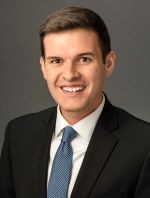
Dr. Jonathan Hubler
Department of Civil & Environmental Engineering
College of Engineering
Project Title: Investigation of More Realistic Earthquake Laboratory Testing for Improved Infrastructure Resiliency
The goal of this study is to apply more realistic earthquake shaking to laboratory soil specimens to further our understanding of soil liquefaction and its consequences. Soil liquefaction is a complex phenomenon that causes saturated, cohesionless soils, such as sands and silts, to lose strength and behave similar to a liquid during earthquake shaking. Current methods to predict liquefaction triggering rely mainly on field testing of soil to evaluate liquefaction potential. However, field data can be limited in its findings because it can only be gathered after an earthquake has occurred. Laboratory testing using devices such as a cyclic simple shear (CSS) enables researchers to gather more types of data by simulating earthquakes in a controlled environment using a variety of materials and scenarios. Although the majority of research to date using CSS devices has applied a uniform cyclic motion to simulate earthquake ground motions, the CSS device housed in the Villanova University Soils Laboratory has the capability to apply previously recorded earthquake ground motions to soil specimens. This project seeks to evaluate and compare the liquefaction response of two different soils subjected to both uniform cyclic motion and actual earthquake ground motions in the CSS device at Villanova.
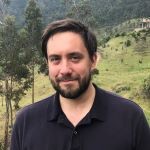
Dr. Justin Humphreys
Department of Philosophy
College of Liberal Arts and Sciences
Project Title: Algorithmic Fairness and the Theory of Justice
When is an algorithm fair? As predictive models are used for an increasing number of social tasks, this question becomes pressing. Although researchers in computer science and machine learning have discussed different standards of fairness that can be selected when designing and implementing an algorithm, the question of which standard of fairness should be used for a particular application remains unanswered and left to external decision makers. This project suggests that normative theory, specifically Rawls’ Theory of Justice, can offer explicit standards for choosing metrics of fairness for predictive models.

Dr. Todd Jackman
Department of Biology
College of Liberal Arts and Sciences
Project Title: Exploring and Expanding Genomic Resources for Reconstructing Evolutionary History
Determining the entire DNA sequence of an organism once cost millions of dollars and a required a huge amount of labor. Now whole genomes have become far less work and are much less expensive to obtain. One of my primary research tools has been the use of DNA sequences to reliably reconstruct the evolutionary history of lizards. Until recently, I, my students, and collaborators have relied on a small set of genes to analyze groups of lizards varying from all the geckos of the world to detailed examinations of small groups of closely related species. For my summer research grant, I will expand my study of lizards to whole genomes, involving students, and analyzing data for use in publications and a grant proposal.
Analyzing the entire genome is not feasible for a number of reasons. For species that have been separated for millions of years it is nearly impossible to identify all of the comparable DNA sequences between species. Therefore, choosing an appropriate subset of the genome is a necessity. This year, myself, my former graduate student, Ben Karin, and Tony Gamble published our criteria for subsampling the genome by focusing on rapidly evolving, long exons. We identified a set of 179 genes that average 3,639 bases in length and can reconstruct the evolutionary history of lizards and snakes. We called our this subset RELEC (Rapidly Evolving Long Exon Capture). I plan to analyze RELEC subsets of whole genomes using 36 samples of diverse New Caledonian geckos.
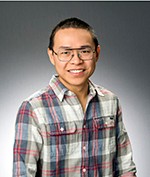
Dr. Xun Jiao
Department of Electrical and Computer Engineering
College of Engineering
Project Title: Building Safe Artificial Intelligence via Fuzz Testing
Artificial intelligence (AI) has emerged as a foundational technology that is quickly finding broad application in every sector of the economy, profoundly reshaping society. Hyperdimensional computing (HDC), an emerging computational paradigm of AI inspired by biological neuronal processing in the human brain, has exceeded human-level performance across a wide range of application domains such as robotics, language classification, brain-computer interface, DNA sequencing, and image classification. Unfortunately, AI is not perfectly safe. Recent studies showed that AI is vulnerable to adversarial attack; that is, an attacker can intentionally craft adversarial inputs to “fool” the AI into making mistakes. In safety-critical applications, such incorrect behaviors can lead to disastrous consequences. This project proposes a novel research direction of building safe HDC-based AI using fuzz testing. Fuzz testing (fuzzing) is a popular software testing techniques for automated bug and vulnerability detection. The key idea of fuzzing is to strategically generate plenty of adversarial inputs to execute the target application (HDC-based AI in our context). Using the adversarial inputs, we propose two retraining methods that can update the HDC parameters to enhance its resilience to adversarial attack, building safe HDC-based AI.
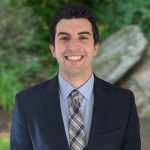
Dr. Kyle Juretus
Department of Electrical and Computer Engineering
College of Engineering
Project Title: Fast and Secure Automated Logic Obfuscation of Integrated Circuits
This project focuses on creating secure and easy to use computing systems by enhancing security at the hardware level. For many years, hardware was assumed to be secure, with research focusing on making computers faster, more efficient, and smaller. However, attacks such as Meltdown and Spectre, which target performance optimizations to leak sensitive information from a computer, have garnered significant attention. Adding to the concern, the hardware design flow has been undergoing many changes due to increasing manufacturing costs and time to market constraints. The time and cost pressures within the semiconductor industry have shifted the once in-house manufacturing and test of hardware to untrusted third parties, creating additional security threats for computing systems.
To reduce the threat of untrusted third parties throughout the hardware design flow, this project focuses on creating a fast and efficient logic obfuscation methodology. Prior methods of obfuscating a function have been slow or led to biased selections, which leaked the security information encoded in the IC to an adversary. This project will instead focus on Boolean circuit manipulation to allow for fast and non-biased transformation.

Dr. Thomas Ksiazek
Department of Communication
College of Liberal Arts and Sciences
Project Title: Trust and Information Quality Deficits in the News: A Cross-National Comparison of Users, Journalists, and News Intermediaries
Across the globe, trust in news is declining, prompting news publishers, funders, platforms, and researchers to pursue a variety of efforts with the hope of improving journalism’s credibility among the public. However, most of the research focus on trust and information quality deficits has struggled with two blindspots: (1) it has been overly focused on news audiences rather than news producers and intermediaries, and (2) it has been overly focused on the U.S. at the expense of other regions of the world. This project aims to address these gaps by proposing a cross-national, mixed-method study across news environments with varying levels of trust perceptions, media literacy and differing histories of how online news has evolved (India, South Korea, United States). Our multi-country team of investigators will first map user consumption patterns across news intermediaries and (dis)trusted news sources with passive usage data merged with survey data on trust and information quality. Next, we will explore what journalists and intermediaries believe impacts audience trust and perceptions of information quality through in-depth interviews. Finally, through these interviews we will develop a taxonomy of role conceptions among varied news intermediaries and journalists that have a stake in trust and information quality deficits, both within and across national contexts. In doing so, we will offer novel insights and tangible recommendations for winning back audience trust and improving perceptions of information quality in a global context, making our findings valuable and actionable for academics, journalists, citizens, governments, policy makers, and information-sharing platforms across the world.

Dr. Bo Li
Department of Mechanical Engineering
College of Engineering
Project Title: 3D Printing of Nanoporous Ceramic
The goal of this proposal is to seek how to effectively control these tiny pores in a 3D printed ceramic and, thereafter, its mechanical properties especially when nanoparticles are utilized. In this project, the PI will integrate his expertise in SiO2 surface treatment and nanoparticle assembly with the DIW process. This integration provides a unique path to tailor the interaction among nanoparticles, binder, and solvent and generate a Villanova-owned printing recipe. Then, the size of particles will be varied and their influence on the 1st order porosity and mechanical performance of the product will be studied.
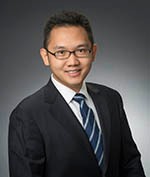
Dr. Chengyu Li
Department of Mechanical Engineering
College of Engineering
Project Title: Hydrodynamics of Ciliary Flows at Intermediate Reynolds Numbers
Cilia are flexible hair-like appendages commonly used to create fluid motion in biological systems, such as the self-propulsion of Paramecium, enhancing the feeding function in coral reefs, and pumping bio-fluids in the respiratory and reproductive systems of human body. Typical cilia are tens of microns long and have Reynolds numbers (Re) on the order of 10^-6 to 10^-2. However, the flow physics of ciliary flows at such low Re cannot applied for designing miniaturized devices, sensors, and swimming robots at the millimeter scale. One group of organisms utilizing cilia at such larger scales is the ctenophores (comb jellies). They are the largest animals in the world to locomote via cilia. Ctenophore cilia are on the order of a millimeter in length, with Re on the order of 10^0 to 10^2. Therefore, Ctenophore cilia present a unique opportunity to study the fundamental fluid dynamics of a ubiquitous biological propulsion system that is used across the intermediate Re regime. This project aims to explore the hydrodynamics of Ctenophore cilia using an in-house immersed-boundary-method based Computational Fluid Dynamics solver. The current flow solver is capable of simulating flows with complex moving boundaries, predicting instantaneous hydrodynamic force generation, and resolving complex vortex structures that potentially affect both hydrodynamic performance and sensory physiology. The project will establish a theoretical foundation to explore the fluid dynamic principles of flexible bio-structures at intermediate Re. The findings from this project will provide important implications for the design of bio-inspired miniaturized swimming robots.

Dr. Xiaoxiao Li
Department of Economics
and
Dr. Raisa Velthuis
Department of Finance & Real Estate
School of Business
Project Tile: USINESS Does the Glass Cliff Exist? An In-depth Empirical Analysis
We explore gender disparities in occupational outcomes and examine potential gender discrimination in the labor market. Specifically, we study the glass cliff effect, where women predominantly advance into precarious leadership roles. We attempt to answer the following important yet underexplored questions: Is there empirical evidence suggesting that women are more likely to be promoted into leadership positions, such as CEOs, during periods of lower financial performance or increased stress, when the chance of failure is highest? And if so, is such a phenomenon most salient in stereotypically ‘male’ dominant industries (e.g., finance, engineering, construction, etc.)? To answer these questions, we rely on comprehensive data from Compustat on company executives and financial performance. We greatly expand the sample compared to existing studies. Our preliminary results provide evidence of the glass cliff effect in some (such as Manufacturing) but not all industries. Our project contributes to the research on CEO selection and turnover, and specifically evaluates the degree of inclusivity in the labor market with regard to female participation at the highest levels of managerial control in corporations.
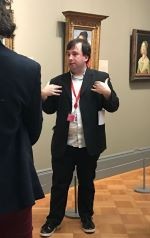
Dr. Timothy McCall
Department of History (Art History)
College of Liberal Arts and Sciences
Project Title: Making the Renaissance Man
Making the Renaissance Man investigates the images, objects, and experiences that fashioned masculinity in fifteenth-century Italy and offers a timely critical perspective on dominant Renaissance masculinities by exploring and ultimately denaturalizing representations of elite manhood (then as now essential to patriarchal power). Lords fashioned privilege through displays of violence and virility, yet also through amorous performances. This book interprets the material culture and activities through which boys were understood to become men and princes to become lords. They fought each other in jousts and demonstrated masculine prowess through the hunt. These were hardly frivolous pastimes, but rather essential displays of status and privilege. Charismatic lords visualized their dominance over men through rituals of knighting, and I argue that they likewise enacted control over both women and men through the seduction of the former (and sometimes the latter). By interpreting ideologies of noble rule, Making the Renaissance Man provides a sophisticated account of Italian Renaissance masculinity.

Dr. Michelle McKay
and
Dr. Melissa O'Connor
Nursing
College of Nursing
Project Title: The Symptom Experience of Older Adults with Mobility Limitations
Almost 18 million adults 65 years of age and older have mobility limitations or are unable to walk a quarter of a mile or climb stairs independently, which subsequently leads to disability, decreased quality of life, and poor health outcomes. This has never been more apparent than now during a global pandemic where older adults have minimal opportunities for social engagement and movement outside of the home. In addition, older adults frequently contact healthcare providers for burdensome symptoms. Symptom burden is associated with decreased physical performance, increased health care utilization, and decreased quality of life in older adults. Although older adults often experience multiple symptoms that contribute to changes in mobility patterns and are an underlying cause of disability, research to date has not focused on the relationship between self-reported symptoms specifically responsible for mobility limitations and the resulting adverse outcomes. The proposed qualitative descriptive study includes interviews of community-dwelling older adults about symptoms responsible for current mobility limitations, their symptom burden experience, changes in mobility since the start of the COVID-19 pandemic, and the feasibility of a nurse-driven intervention for symptom and mobility management delivered via technology. Symptoms may be treatable; a focus on symptoms responsible for mobility limitations can assist with intervention development with the goal of improving functioning in older adults. Using a symptom-based treatment approach may also lead to a reduction in negative outcomes including progression of mobility decline and reduced quality of life.
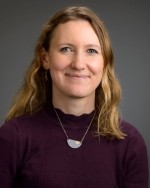
Dr. Cera Murtagh
Department of Political Science
College of Liberal Arts and Sciences
Project Title: Gender Representation in Post-Conflict Societies
I am honored to have been awarded the University Summer Grant to develop a new chapter of my book manuscript. As a political science scholar my work lies at the intersection of conflict, peace and gender. My research is motivated by the question of how societies move on from political violence towards, not only peace, but broader democracy, equality and human rights. My book explores the plight of ‘non-ethnic’ political parties and movements in post-conflict societies - those that attempt to reach across the ethnic divide, by contrast to the dominant ‘ethnic parties’ that seek to represent one ethnic group exclusively. It examines the institutional barriers these non-ethnic parties face in the post-conflict environments of Northern Ireland and Bosnia and Herzegovina and how they navigate those barriers. Gender, as a key cross-cutting identity, is critical to this analysis. I intend to use this grant to conduct additional fieldwork in Northern Ireland to inform a new chapter of my book that concerns gender representation in ethnic and non-ethnic parties. I am most grateful for the the time and support offered by this grant, and will use it to the best of my ability to maximize the contribution of this research.

Dr. Ebelechukwu Nwafor
Department of Computing Sciences
College of Liberal Arts and Sciences
Project Title: Predicting User Intent in a Conversation
The goal of this project is to develop techniques that allow computing devices to accurately predict user intent in a given conversation. Motivated by the increase in question answering systems, conversation assistants (e.g., Siri, Alexa), and automated chat systems, this research serves as a step to improving the state of the art in user intent detection. We will explore the use of machine learning and deep learning techniques such as bidirectional Long Short Time Memory (LSTM) and language models such as Bidirectional Encoders for Representations for Transformers (BERT) which apply neural networks to automatically discover data insights. Consequently, our approach must be robust enough to learn intent categories from conversations and provide a means to classify incoming conversations based on user intents categories learned.
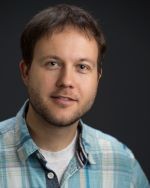
Dr. Andrej Prsa
Department of Astrophysics & Planetary Science
College of Liberal Arts and Sciences
Project Title: Thermodynamical Processes in Contact Binary Stars
Contact binary stars are a special class of objects where the two stars are so close to one another that they share a common envelope. Space telescope data indicate that these common envelopes are remarkably uniform irrespective of the properties of the stars embedded in them. This establishes the existence of energy flows within the envelopes that equalize surface temperature. Somewhat embarrassingly, there is not a single code in existence that can account for these energy flows. We aim to remedy that in this pilot study. We propose three toy models for energy transfer: radial, lateral and magnetic. Our goal is to implement these energy transfer mechanisms into PHOEBE, our own code that has been used as one of the standards in the binary star field, and stack the models against observations. This will allow us to discriminate between the three proposed models and infer the likelihood for each across the observed sample. This work should fill the glaring gap in our modeling of contact binaries and allow us to tackle fundamental questions on the evolutionary pathways of these unique objects.
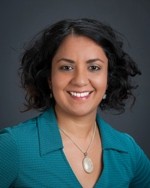
Dr. Lisa Rodrigues
Department of Geography and the Environment
College of Liberal Arts and Sciences
Project Title: Its What’s Inside That Counts: Uncovering the Role of Endolithic Algae in Coral Trophic Physiology
The northern star coral, Astrangia poculata, is the dominate coral species extending into the cooler waters off New England. A. poculata is especially unique because it is found in two types in nature: a brown morph or a white morph that live with or without zooxanthellae within their coral tissue, respectively. These two morphs exhibit different processes for obtaining nutrition that impact their trophic physiology. A. poculata also maintains a secondary symbiosis with endolithic algae that live within their skeleton. The contribution of the endolithic algae to overall trophic physiology and endolithic algal interaction, if any, with the zooxanthellae is unknown. Here, I propose an in-depth trophic analysis of A. poculata to better understand how carbon and nitrogen are transferred and shared among the different members within the coral symbiosis. Using a technique called a pulse-chase experiment, I will isotopically label or "pulse" different sources of carbon and nitrogen in different coral colonies and follow or "chase" how these nutrients are used among the members of the coral symbiosis. The results will provide insight on how this understudied coral species is able to thrive under unique environmental conditions.
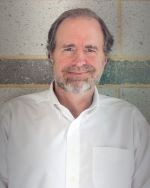
Dr. Paul Rosier
Department of History
College of Liberal Arts and Sciences
Project Title: Citizens of the World’: Native Americans, Citizenship, and the Promise of American Life
This University Summer Grant will enable me to write the fifth and final chapter of my book project, entitled “‘Citizens of the World’: Native Americans, Citizenship, and the Promise of American Life” (under contract with Cambridge University Press), which examines the multiple dimensions of Native American citizenship from the Revolutionary era to the present. Using a tripartite construction of citizenship –tribal, national (American), and Indigenous (International)–the book examines the ways in which Native people resisted the forces of settler colonialism, fought for both their civil rights and treaty rights, and worked to shape the civic discourse of a multi-cultural America to promote the promise of American life based on the principle that “all [citizens] are created equal,” emphasizing throughout the voices of Native activists and politicians. Chapter Five will analyze late 20th century and early 21st century pan-tribal campaigns to protect the treaty-based sovereignty that sustains their cultural identities; examine conflicts within Native nations which developed from gaming revenues that led to tensions over who could claim Native citizenship in order to gain access to those revenues, including descendants of freedpeople continuing to seek citizenship rights in the Cherokee Nation; consider the role of Native Americans in furthering the rise of a global Indigenous sustainability movement; and use the experiences of Native American voters and candidates in local, state, and national elections from 2000 to 2020, including resisting voter suppression campaigns, to provide insight into the complicated intersections of their multiple citizenships.
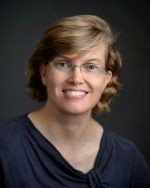
Dr. Sally Scholz
Department of Philosophy
College of Liberal Arts and Sciences
Project Title: The Criminalization of Solidarity
Pia Klemp, a German captain for Sea Watch International, faced prosecution in Italy for rescuing 14,000 migrants with her crew in the Mediterranean Sea between 2016-2018. In the United States, Scott Warren was arrested in January 2018 for providing humanitarian aid—food and water, shelter—to migrants. The criminalization of compassionate acts, or crimes of solidarity, highlights a paradox found in civilian responses to humanitarian needs that are construed as crimes against the identity and security of nations. Klemp, Warren, and many other advocates and activists claim a right to respond to the needs of others, a right that does not easily fit in current models of moral obligation that identify citizen obligations, on the one hand, and humanitarian obligations, on the other. My project, a book chapter on “The Criminalization of Solidarity,” seeks to understand this paradox, thereby laying the groundwork for a conception of civilian obligations tied neither to citizenship status nor human rights per se. This approach enhances the understanding of obligations of solidarity in three ways: (1) it refocuses obligations of solidarity away from either nationalist identities on one hand and universal humanity on the other, and toward the most vulnerable regardless of citizenship status; (2) it prioritizes equity and peace rather than protection in conceptualizing the nature of society; and (3) it questions the validity of nationalist solidarities limited by borders of nation-states.
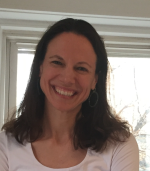
Dr. Madora Soutter
Department of Education and Counseling
College of Liberal Arts and Sciences
Project Title: Transformative Social-Emotional Learning in Online Spaces
This study aims to understand the ways in which transformative social and emotional learning (Jagers, Rivas-Drake & Williams, 2019) can be implemented in online spaces. Using in-depth case studies of families, teachers, and children, our goal is to explore the ways in which these groups experienced the shift to online learning during the onset of the Covid-19 pandemic in the spring semester of 2020 through the spring semester 2021. Given the documented importance of social and emotional learning (SEL) in schools, and the critical importance of conceptualizing SEL through an equity lens, the present study explores the ways in which this kind of SEL is translated from in-person contexts to online spaces, and if this kind of shift is indeed authentically possible.

Dr. Ken Chih-Yan Sun
Department of Sociology and Criminology
College of Liberal Arts and Sciences
Project Title: Transnational Family Caregiving During a Global Pandemic: Comparing Immigrants from Taiwan with Those from Mainland China
In 2020, the Coronavirus continues to ravage the world. This pandemic has thrown into sharp relief the core of this project: the myriad and complex ways social inequalities mediate the family lives of immigrants, both nationally and transnationally. Using Chinese immigrants in the United States as instances, this project examines the impact of a global pandemic on parental caregiving in the context of long-distance family dispersal.
First, we ask how Chinese immigrants of different class standing articulate and fulfill their sense of responsibility, obligation, and commitment to their aging parents back home as the outbreak of COVID-19 significantly restricts their and their families’ ability to travel. Second, we explore how the financial recession in the context of a global pandemic restrains the ability of migrants to protect and provide for family members in the homeland. Finally, this proposed research also seeks to understand the circulation of emotions, information, and advice between globally dispersed families. As the pandemic strikes many parts of the world, this project will unpack the ways in which immigrants represent themselves to their loved ones from afar and the complex reasons behind their strategies of self-presentation. In doing so, this proposed research advances the scholarship on transnational migration by centralizing the family lives of migrants onto the analysis of extenuating circumstances such as COVID-19.
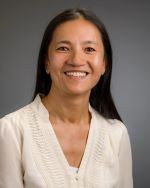
Dr. Tsering Wangmo
Department of English
College of Liberal Arts and Sciences
Project Title: Margins in Exile
Margins in Exile juxtaposes the external struggle for international recognition by the Tibetan Government-in-Exile with the less examined internal struggle to command loyalty within the Tibetan diaspora. I study the discourse of unity produced within the Tibetan exile communities in India and Nepal in the 1960s as the dominant framework of governance for thinking about the boundaries of belonging, citizenship in exile, political obligation, and the values of the Tibetan people. I argue that unity was presented simultaneously as the moral and political responsibility of the modern Tibetan “refugee-citizen,” as well as the traditional duty of a Tibetan Buddhist.
Margins in Exile suggests that unity was imposed as a guarantor of freedom along with democracy, but that it also functioned by disciplining personal freedoms thus creating a margin between those who belonged and those who didn’t.

Dr. Kelly Welch
Department of Sociology and Criminology
College of Liberal Arts and Sciences
Project Title: Does School Discipline Contribute to Racial and Ethnic Disparities in Adulthood Arrests and Incarceration?
The process whereby many students who are subjected to severe discipline in schools are eventually punished in the criminal justice system is commonly referred to as the “school-to-prison pipeline.” Several explanations for this link have been suggested, but because of the harmful outcomes of exclusionary student punishment in particular, it is abundantly clear that expulsions and suspensions “do more than simply punish delinquency. They actually help produce it.” One disturbing aspect of this fact is that neither criminal justice punitiveness nor harsh school discipline have been experienced uniformly in the U.S. Vast racial and ethnic disparities exist in the use of punishment in both schools and the justice system, regardless of levels of offending or misbehavior: not only are Black and Latinx suspects and convicts overrepresented in the justice system, but Black and Latinx students disproportionately experience exclusionary school discipline. While limited research shows how school suspensions and expulsions increase a child’s chance of future criminal justice involvement, no prior research has explored the possibility that racial and ethnic disparities in criminal justice involvement are partially the result of being punished as a kid in school. My study is the first to apply a cumulative disadvantage theoretical framework to examine the extent to which racial and ethnic disparities in arrests and incarceration are attributable, in part, by prior experiences of being suspended and expelled in school.

Dr. Jie Xu
Department of Communication
College of Liberal Arts and Sciences
Project Title: Influence of Message Valence, Temporal Framing, and Consideration for Future Consequences on COVID-19 Risk Perception and Vaccination
Declared by the World Health Organization (WHO, 2020) as a pandemic and an international emergency in March 2020, the Coronavirus disease 2019 (COVID-19) has been striking the globe on an unprecedented scale as a major global public health threat with far-reaching implications. Since the beginning of the outbreak, scholars from various fields such as public health and communication and technology have started researching COVID-19 related issues. One overarching question across the spectrum of communication research is to dissect the impact of various message features on persuasive outcomes, and how they interact with people’s individual traits and mental schemas to exert influence. This project seeks to examine the role of two message frames (gain vs. loss and proximal vs. distal) and individuals’ consideration of future consequences (CFC) on COVID-19 vaccination attitude and behavior. This study aims to make significant theoretical and applied contributions by adding to extant literature in three important ways. First, it constitutes one of the first scholarly inquires that examine the COVID vaccine. Second, it provides a more theoretically grounded foundation for several new lines of inquiry into the intersection of framing and persuasion. Third, it carries important practical implications for message design for health communication practitioners.
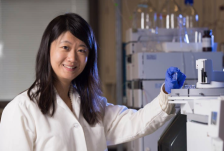
Dr. Wenqing Xu
Department of Civil & Environmental Engineering
College of Engineering
Project Title: Immobilized Laccase for Rapid Per- and Polyfluoroalkyl Substances (PFAS) Destruction
Per- and polyfluoroalkyl substances (PFASs) are a suite of ionizable synthetic organofluorine surfactants that have been widely used in various industrial and consumer applications over the past few decades. PFASs are highly resistant to environmental degradation. As a result, more than 3000 PFAS compounds exist in the environment, contaminating surface water, groundwater, soil, crops, and animal products. Recent reports have indicated that PFASs are present in the drinking water of 110 million Americans. The existing PFAS treatment technologies (e.g., activated carbon) have focused on concentrating PFASs from water to solids, which generate PFAS-enriched solid residues that must be reactivated or incinerated. Moreover, material consumptions and the disposal of spent materials can be cost-prohibitive. Enzymatic processes offer attractive alternatives for direct PFAS destruction. In particular, some studies have shown partial PFAS defluorination by laccase, an extracellular enzyme from fungal species, in a mediator system. However, concerns over the slow reaction kinetics and the stability of laccase in environmental matrices remain. The project aims to enhance the activity, stability, and reusability of an extracellular enzyme, laccase from Trametes versicolor, by immobilizing it onto GAC to facilitate the rapid destruction of PFASs. The rationale of selecting GAC as the enzyme support is to leverage its widely accepted role in concentrating PFASs from contaminated water. We hypothesize that the immobilized laccase can facilitate the destruction of adsorbed PFASs, potentially free-up the adsorption sites on GAC, and ultimately regenerate the materials in-situ.
